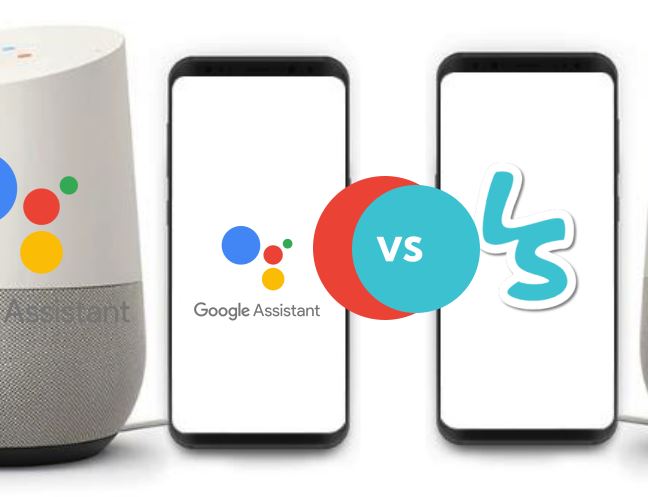Voice control has become increasingly popular, with many people embracing hands-free technology to navigate the web, manage tasks, and increase productivity. Among the voice command tools available for Google Chrome, two stand out: LipSurf and Voice Control. While both offer unique features to make browsing more accessible, there are some key differences that might make one a better fit for your needs.
In this article, we’ll dive deep into what LipSurf and Voice Control offer, how they work, and the pros and cons of each. Whether you’re looking for a tool to streamline your browsing experience or simply want to know which one has the best features, this guide will help you make an informed decision.
Why Use Voice Control in Google Chrome?
Before we dig into the comparison, let’s talk about why you might want to use voice control in Chrome in the first place.
Voice commands are about convenience and accessibility. Imagine being able to browse the web, control tabs, or even write and send emails without touching your keyboard or mouse. This is especially useful for people with mobility issues, RSI (Repetitive Strain Injury), or even those who simply want a more hands-free, ergonomic approach to interacting with their devices.
Plus, voice commands can speed up certain tasks. For instance, instead of opening a new tab, typing a search query, and pressing enter, you can simply say, “Open Google and search for the best pizza in New York.” Boom—instant results, no typing required. But for this to work smoothly, you need a reliable tool that understands your commands clearly and responds efficiently. That’s where LipSurf and Voice Control come in.
What is LipSurf?
LipSurf is a voice command extension for Google Chrome that transforms your browsing experience by allowing you to control various functions and perform actions using your voice. From simple commands like opening tabs and clicking links to more complex ones like controlling YouTube playback or dictating emails, LipSurf is designed to be intuitive and comprehensive.
Key Features of LipSurf:
- Voice Commands for Browsing: You can say things like “scroll down,” “next tab,” or “go back” to control the browser.
- Extensive Customization: LipSurf offers the ability to create custom voice commands tailored to your needs. This is a major plus for those looking to streamline specific workflows.
- Third-Party App Integration: The extension integrates with apps like YouTube, Gmail, and Google Docs, allowing you to use voice commands across multiple platforms.
- Multi-Language Support: LipSurf offers support for multiple languages, making it accessible to a global audience.
- Accessibility Focus: For users with disabilities, LipSurf makes web navigation hands-free and customizable, offering an easier way to interact with Chrome.
How Does LipSurf Work?
LipSurf is simple to install through the Chrome Web Store. Once you’ve added it to your browser, you can activate it by speaking aloud. The app listens for voice commands and converts them into actions within the browser. There’s a bit of learning involved—certain commands may need to be repeated if not recognized immediately—but overall, it aims to provide a fluid and efficient experience.
What is Voice Control for Google Chrome?
Voice Control for Google Chrome is another powerful voice command extension available for users. Unlike LipSurf, which is primarily designed for extensive browsing functionality, Voice Control has a stronger focus on basic navigation and performing common browser actions hands-free.
Key Features of Voice Control:
- Basic Browsing Commands: With Voice Control, you can easily manage tabs, scroll through pages, or click on links using voice commands like “open a new tab” or “scroll up.”
- Simplicity: While Voice Control lacks the customization options of LipSurf, it makes up for this with simplicity and ease of use. If you’re looking for basic commands without the complexity of adding new ones, this is a great option.
- Responsive and Fast: Since it’s built to handle basic commands, Voice Control tends to respond faster and with fewer errors when executing tasks like moving between tabs or navigating back and forth between web pages.
How Does Voice Control Work?
Just like LipSurf, Voice Control is a Chrome extension you install through the Chrome Web Store. Once installed, you activate it by speaking commands directly to your computer. It focuses on performing essential tasks like opening new tabs, closing them, refreshing the page, and other fundamental browser actions.
LipSurf vs. Voice Control: A Head-to-Head Comparison
Now that we’ve covered the basics of each tool, let’s compare them based on several key factors:
1. Customization
- LipSurf: Offers extensive customization options, allowing you to create your own commands for various tasks. This makes it a versatile tool for users who want to tailor the browsing experience to their personal needs.
- Voice Control: Offers a more straightforward, out-of-the-box experience. If you just need basic browsing commands and aren’t looking for advanced customization, Voice Control will do the trick.
2. Third-Party Integrations
- LipSurf: Supports integration with several popular web apps, such as YouTube, Gmail, and Google Docs. This means you can control not just your browser but specific web services with voice commands.
- Voice Control: Primarily focuses on controlling the browser itself, without the same level of integration with third-party apps.
3. Ease of Use
- LipSurf: Requires a bit of a learning curve, especially if you’re interested in creating custom commands or using the more advanced features. That said, once you get the hang of it, it can be a powerful tool.
- Voice Control: Simple and straightforward, with a clean user interface and basic commands that don’t require much training. It’s ideal for those who want quick access to basic browser functions.
4. Accuracy
- LipSurf: Overall accurate but may require repeated commands if your environment is noisy or if you have an accent that it struggles to recognize initially. Customizing commands can help mitigate some of these challenges.
- Voice Control: Very responsive to basic commands, making it an excellent choice for fast, error-free browsing. However, its functionality is more limited compared to LipSurf.
5. Accessibility
- LipSurf: Designed with accessibility in mind, making it a great choice for users with disabilities. It offers hands-free control and customization that can be particularly helpful for those with mobility issues.
- Voice Control: Also offers a hands-free browsing experience but lacks some of the more in-depth features that can help users with specific accessibility needs.
Pros and Cons of LipSurf
Pros:
- Customizable voice commands
- Integrates with third-party apps like YouTube and Gmail
- Multi-language support
- Tailored for accessibility
Cons:
- Steeper learning curve for custom commands
- May require some fine-tuning to improve accuracy in noisy environments
Pros and Cons of Voice Control
Pros:
- Simple and intuitive
- Fast, responsive commands
- Ideal for users who want basic browser control
Cons:
- Lacks customization options
- No third-party app integration
- Limited to fundamental browsing tasks
Which One is Right for You?
When deciding between LipSurf and Voice Control for Google Chrome, think about what you’re hoping to achieve. If you need basic navigation and easy-to-use voice commands, Voice Control is a great, no-frills option. It’s simple, quick, and perfect for everyday browsing tasks.
On the other hand, if you want more control, flexibility, and the ability to integrate with third-party apps, LipSurf is the better option. Its customization features make it a powerful tool for power users, especially those looking to optimize their workflow or need a more accessible way to interact with their computer.
Conclusion: Voice Control that Fits Your Needs
At the end of the day, both LipSurf and Voice Control can enhance your browsing experience, but each serves a slightly different purpose. Voice Control is ideal if you want a straightforward tool to manage your browser hands-free. LipSurf, with its customization and integration features, is perfect for those who want more from their voice command software.
Think about how you use your browser and what you’d like to get out of a voice command tool. Once you’ve got that figured out, you’ll be well on your way to a more efficient, hands-free browsing experience!
Read Next:
10 Best Volume Booster Extensions for Chrome
New Possibilities with NotebookLM: Now Supports Audio and Video Integration





